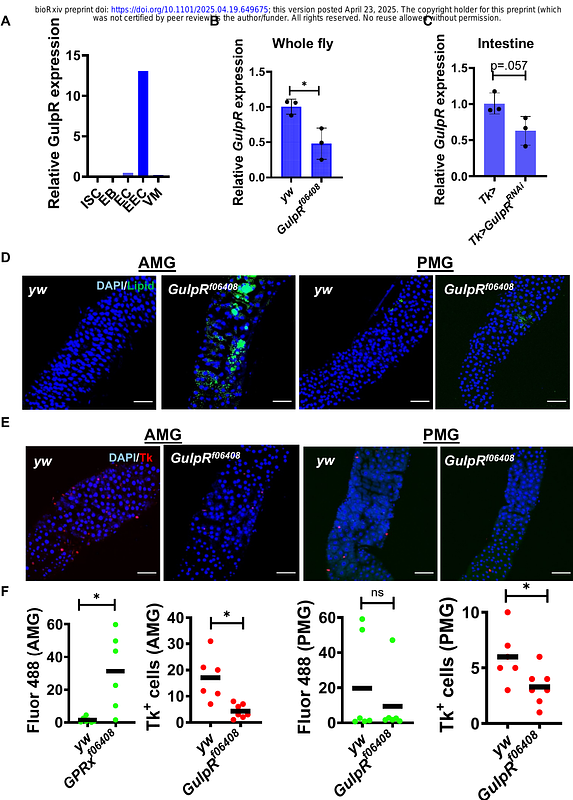The Drosophila G protein-coupled receptor, GulpR, is essential for lipid mobilization in response to nutrient-limitation

The Drosophila G protein-coupled receptor, GulpR, is essential for lipid mobilization in response to nutrient-limitation
Barraza, D.; Ding, X.; Wang, Z.; Jugder, B.-E.; Watnick, P. I.
AbstractEnteroendocrine cells (EECs) of the intestinal epithelium are major regulators of metabolism and energy homeostasis. This is mainly due to their expression and secretion of enteroendocrine peptides (EEPs). These peptides serve as hormones that control many aspects of metabolic homeostasis including feeding behavior, intestinal contractions, and utilization of energy stores. Regulation of EEP production and release depends largely on EEC-exclusive G protein-coupled receptors (GPCRs) that sense nutrient levels. Here we report the identification of a GPCR expressed principally in EECs, which we have named GulpR due to its role in the response to nutrient stress. We show that GulpR regulates transcription of the EEP Tachykinin (Tk) and that both GulpR and Tk are essential for the transcriptional response that promotes survival of nutrient limitation. Infection with V. cholerae also activates transcription of Tk and lipid mobilization genes. While GulpR is required for activation of Tk transcription during infection, Tk does not play a role in regulation of lipid mobilization genes or survival of infection. Our findings identify a role for GulpR and Tk in survival of starvation and suggest that, although starvation and infection both require significant mobilization of energy stores, the signal transduction systems that regulate the metabolic response to each are distinct.